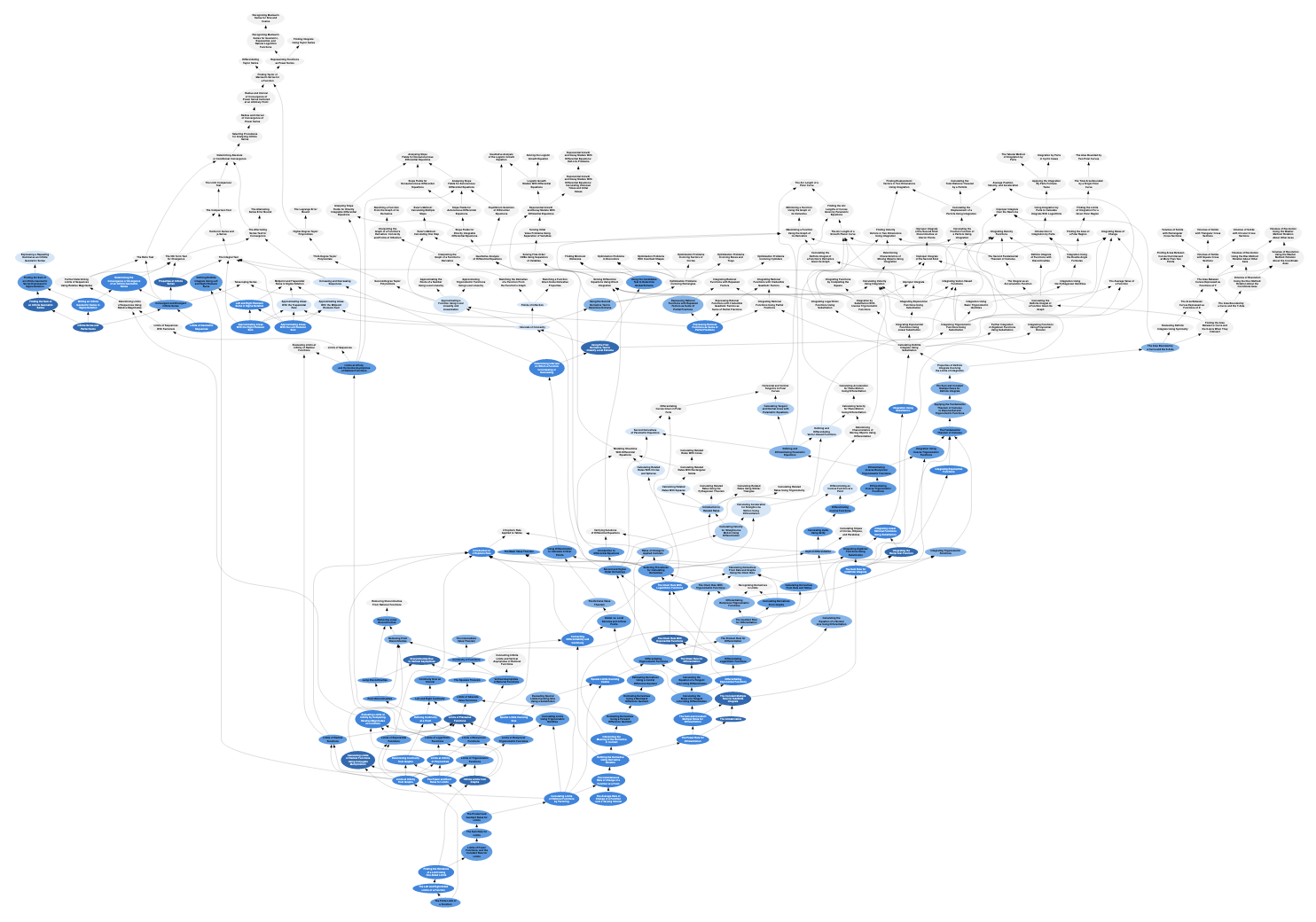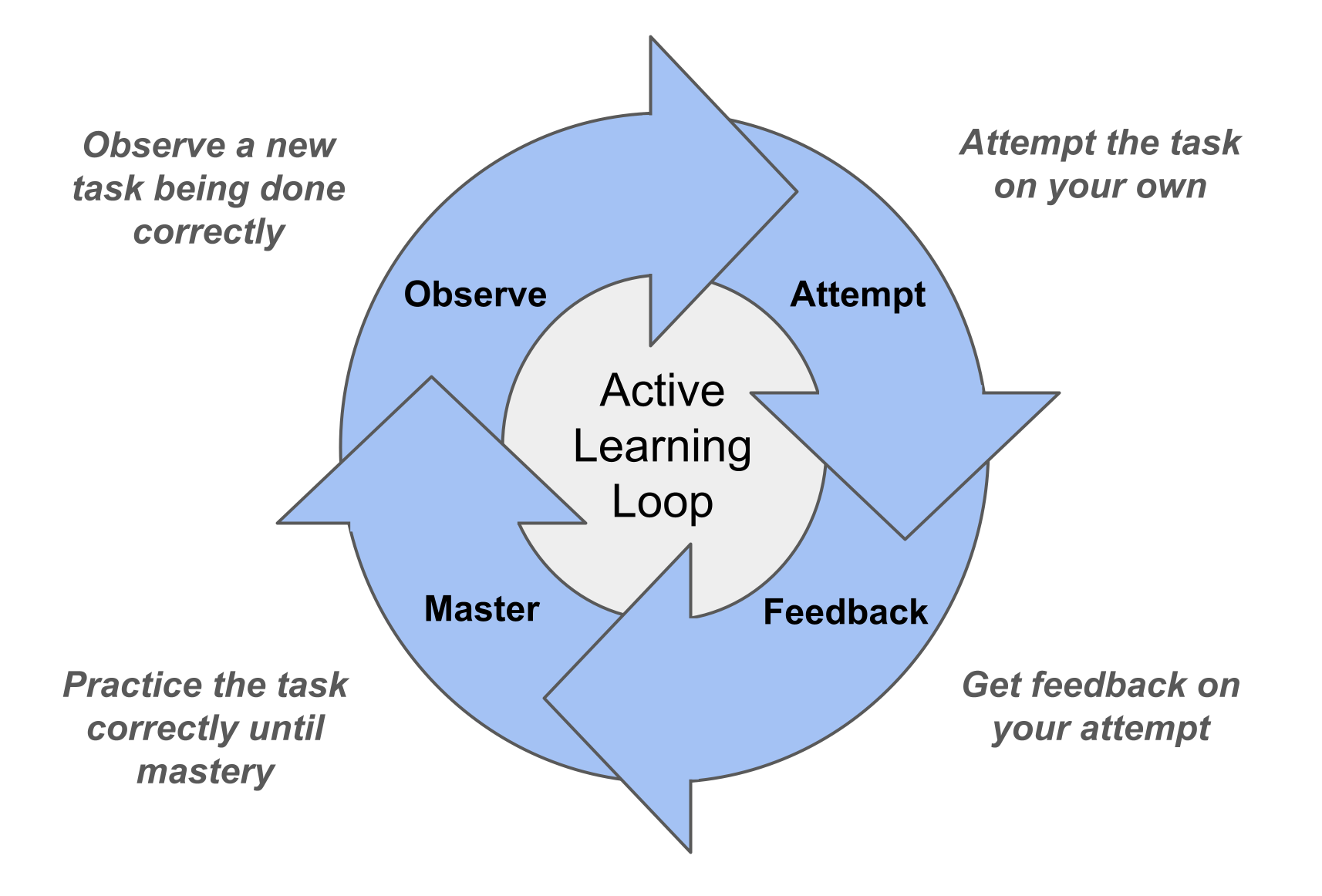Math Academy is an AI-powered, fully-automated online math-learning platform. Math Academy meets each student where they are via an adaptive diagnostic assessment and introduces and reinforces concepts based on each student’s individual strengths and weaknesses. The comprehensive UC approved and WASC accredited courses begin with 4th-grade math and continue through advanced university-level courses, including standard and integrated curriculum that meet both state and common core standards. The Math Academy pedagogy follows a mastery-based learning philosophy, leveraging cutting-edge cognitive learning theory such as distributed practice, interleaving, and mixed review layered on knowledge graph technology to achieve outsized results.
Math Academy uses a mastery-based learning philosophy. The student progresses through a course by completing learning tasks. Every task a student successfully completes, whether a lesson, review, multistep, or quiz, earns them XP (eXperience Points), but the amount awarded depends on how well they do.
Students have a daily XP goal, with each XP being roughly equivalent to 1-minute of focused effort. XP enforces both correct answers and good math habits. Learning math requires diligent efforts such as reading example problems carefully, using pencil and paper, and checking incorrect answers alongside fully worked out solutions. The XP system will reward all of this, and even give bonus XP for a perfect score!
The daily XP goals can be adjusted depending on the student's schedule or needs.
The first thing a student will be tasked with is an adaptive diagnostic assessment, which will take approximately 30 to 45 minutes, but it doesn't have to be completed all at once. The assessment adjusts as it progresses and will place the student in the exact right place within the course they need to be. No wasting time with material the student already knows and no frustrations with material that is just out of reach. We call this the student's knowledge frontier. A student's individual knowledge graph including levels of mastery and a custom course will be created.

Our diagnostic exam measures both mastery and automaticity and will identify any topics in the selected course that the student already knows as well as any missing foundational knowledge from lower courses. The bar for mastery is high, so it is not uncommon for the system to identify a large number of foundational topics that the student needs to refresh on. While this could spell doom in a traditional class, Math Academy is able to fill in the missing foundational knowledge while simultaneously allowing the student to make progress in the current course.
We create and send a detailed diagnostic report that includes: a course placement recommendation, estimated course completion dates with a variety of daily XP goals, foundational gaps identified from prior course material that the system will be remediate, mastery levels of each topic covered within the course, what topics the student was assessed on and how they performed on each topic.
The student is presented with a set of learning tasks they can choose from, which will range over a variety of topics, task type, and XP in order to give the student agency in their learning process.
Each lesson begins with a tutorial that introduces a new concept along with a method for solving the particular category of problem. Math Academy uses several strategies to minimize cognitive load for the student, freeing up the amount of working memory required to do a task.
First, our lessons are highly scaffolded into knowledge points so that each next step in the process is very small, making even “difficult” content accessible to all students. Second, we take advantage of the worked-example effect, meaning that every knowledge point starts with a fully worked out example for students to follow along with. Additionally, we also leverage dual-coding theory by including helpful visualizations and diagrams when possible.
Introductions are followed by concrete examples that focus the student's attention on the essential problem-solving steps.
Next come a series of up to 5 practice problems. If the student gets two practice problems correct in a row, then they move on to the next example, otherwise, they're given additional problems. After the worked example, students solve problems that are similar to the worked example, only progressing to the next knowledge point after they have demonstrated mastery of the previous one. Every question has an explanation so they are able to learn from both the lessons and the practice problems.
The system continually evaluates the student's progress, updating the student's knowledge graph upon the completion of each task. Once a task is mastered, and XP is gained, new tasks are unlocked according to a highly sophisticated algorithm that finds the most efficient, impactful and effective path through a course.
Math Academy's approach is centered around active learning, where students are spending the majority of their time engaged in active problem solving. We intersperse active problem solving with instruction so that students receive only the necessary doses of information right before they use it to actively solve problems and receive immediate feedback.

As students work through lessons, they are able to go back and reference lessons and examples to help them with the practice problems. In order to accurately assess their mastery of the material, a quiz is made available to students every 150 XP and covers a variety of recent topics. This can also be an effective learning method, called the testing effect, also sometimes known as retrieval practice, which maximizes the amount a student's memory is extended when solving review problems.
Quizzes are timed and students may not refer back to examples and lesson material during the quiz. But, the timing can be adjusted for each student in the Accommodations settings. Any topics missed during the quizzes are then immediately assigned as review topics. After adequate review, the quiz is available for an optional re-take for even more XP. Additionally, frequent, low-stakes quizzes with immediate review and opportunity for retakes can be an effective method for reducing math anxiety.
Students are placed into leagues depending on how quickly they're earning XP, and can be promoted or demoted to higher and lower leagues on a weekly basis. While students never lose their accumulated XP, each week is a fresh start and an opportunity to be promoted to a new league.
The goal is to be as efficient as possible and have fun. We never want to push students too far or burn them out. What we have seen in the performance of hundreds of kids using the system is that they really enjoy gaining points, getting in higher and higher leagues and racing against each other on the leaderboard. They are excited about the learning process. We encourage you to give this a try but if you find this is not a motivating factor for your student, you can opt out.
Math Academy uses several other learning strategies to maximize the learning efficiency of the system.
As students learn progressively more advanced material, they reinforce and deepen their foundational knowledge, which helps them develop automaticity. This is known as retroactive facilitation, or layering, which refers to increased performance in existing abilities due to the acquisition of new abilities. Math Academy's curriculum is intentionally structured so that earlier topics are applied and reinforced in higher level topics.
Students are given the opportunity to choose from an array of diverse, non-overlapping learning tasks. This is because conceptually related pieces of knowledge can interfere with each other's recall. Math Academy practices non-interference by teaching new concepts alongside dissimilar material. As students complete their material, their knowledge graphs are updated and the system chooses new topics to guide them most efficiently through the course. By utilizing non-interference, Math Academy reduces confusion, improves recall, and successfully teaches many topics simultaneously, thereby enabling students to make smooth, fast progress through the course. What's more, non-interference also helps keep Math Academy's learning tasks varied and exciting for students.
Math Academy's curriculum spans thousands of linked mathematical topics from grade school through University level math. Learning these topics is one thing, but reviewing and remembering them is another. The algorithm creates the most systematic way of reviewing previously learned material, called spaced repetition, or distributed practice; a repetition is a successful review at the appropriate time. A student's spaced repetition profile is a measure of how many spaced repetitions a student has completed for each math topic across all of mathematics. The darker blue the oval is colored in a student's knowledge graph, the more stable the knowledge for that particular topic. Spaced repetition is the critical component to gaining automaticity, and retaining knowledge in long term memory.